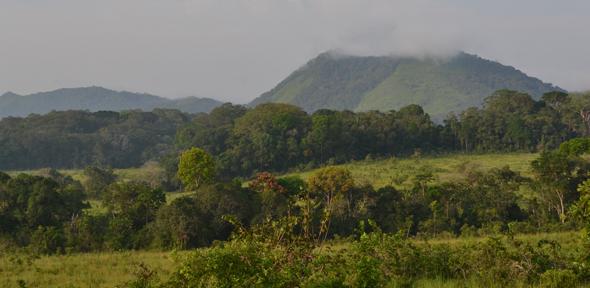
When the family of Albert Perry - a recently deceased African-American man from South Carolina - sent a sample of his DNA to be tested by a genealogy website, they weren’t expecting to rewrite the history of mankind. They were probably just a bit curious.
But Perry’s DNA contained a Y chromosome not seen before, one which potentially reveals that the last common male ancestor in the paternal line of humanity is almost twice as old as previously thought – some 338,000 years, even though the oldest fossil of man is only 195,000 years old.
The DNA was traced back to the Mbo ethnic group in central Africa, based primarily in South West Cameroon, suggesting that the dawn of modern man took place deep in the inhospitable forests of this region rather than the savannahs of East Africa, the area that conventional science has – until now – located as the site of the first homo sapiens.
This Friday, a student-run conference hosted by Cambridge’s Biological Anthropology Division will focus on this groundbreaking research, published earlier this year by a team from the University of Arizona and UCL, to ask some of the major questions it raises: How might this change our understanding of human evolution? Does the forest still influence who we are today?
Relocating Origin will feature experts from Cambridge and elsewhere, including one of the UCL scientists who conducted the original research, Professor Mark Thomas, and will be available to watch through a live webcast.
“This is a hugely exciting time for human origin studies. If these early findings are proved correct, the current narratives of the beginning of our species have been predicated on a different location and a different time!” says Katie Fitzpatrick, a PhD candidate in the Department and one of the conference organisers.
“The hot, humid forests work against fossil preservation as they just decay in such climates – unlike arid regions that have been the focus of early human research so far. However, the evidence may still be in the rainforests but we haven’t been looking”.
By asking ‘What if Adam lived in the forest?’ scientists will explore the implications not just for genetics but human culture, technology and society.
The impact of a forest home on the social structure of the first homo sapiens will be examined by the Division’s Dr Peter Walsh, who researches social networks in primate ecology. A major theme of the conference will be what’s known as Behavioural Immune System hypothesis – the idea that social behavior is an intrinsic part of the immune system, and infectious disease transmission can dictate social contact, especially in the heart of Africa.
“The forest region of central Africa is the disease epicentre of the universe! HIV from chimps, bats carrying rabies, Ebola, SARS, insect vectors carrying malaria and parasitic diseases like river blindness and elephantitis, loads of fecal-oral diseases… It’s described as ‘pathogen rain’,” says Walsh.
“You live in a big group with lots of social interaction, and one of you gets Ebola – everybody dies. So it doesn’t make evolutionary sense in such places”.
Walsh suggests that the region’s ‘pathogen rain’ could have stunted early human development, as limited interactions due to fear of disease meant that ideas and innovations were unable to spread and build, leaving our first ancestors languishing in the forest for thousands of years.
“In disease hotbeds, people have much stronger group identification, which makes them much more hostile – part of the behavioural immune system. You see the same in gorillas.”
One possible theory Walsh will discuss is that, instead of a “key innovation” – such as walking upright or fire - triggering human development, just getting out of the disease-riddled forests could have allowed for much greater social interaction that sparked a “cascade of technological innovation”.
And it is a much more recent human innovation opening up these possibilities. We now live in the age of ‘big data’. The access to unprecedented reams of digital information is transforming almost every area of academic research in tandem with society in general: “This capacity to have genetic samples from vast numbers of people is giving us a whole new view of why we are the way we are, and this is only the start,” says Walsh. 
While the evolutionary scientists stress that much more research needs to be done in the region, which presents all manner of challenges from unfavourable climates for fossilized evidence to political instability, the conference will be the first to look at the emergence of this brand new direction in the field, and how it can be taken “from speculation to science”.
“Certain methodologies need to be nailed down, which will take a few years, but this avenue of investigation could lead to the reassessment of a huge range of thinking around fire, meat-eating, bipedalism, locomotion – when and how these things happened are all potentially up for discussion,” adds Walsh.
“What we want to ask is how this might change things, to get people to start thinking about the possibility that the last fifty years of research has been mistaken in its assumptions about where we came from.”
For a full list of speakers and topics, and a link to the live webcast of the conference, go to http://relocatingorigin.soc.srcf.net/
Inset image: Dr Peter Walsh
A student-led conference to be webcast live will ask, in light of recent research, whether the story of human origin is radically different from established thinking, and what that might mean for everything from genetics to the birth of culture.
This work is licensed under a Creative Commons Licence. If you use this content on your site please link back to this page.
